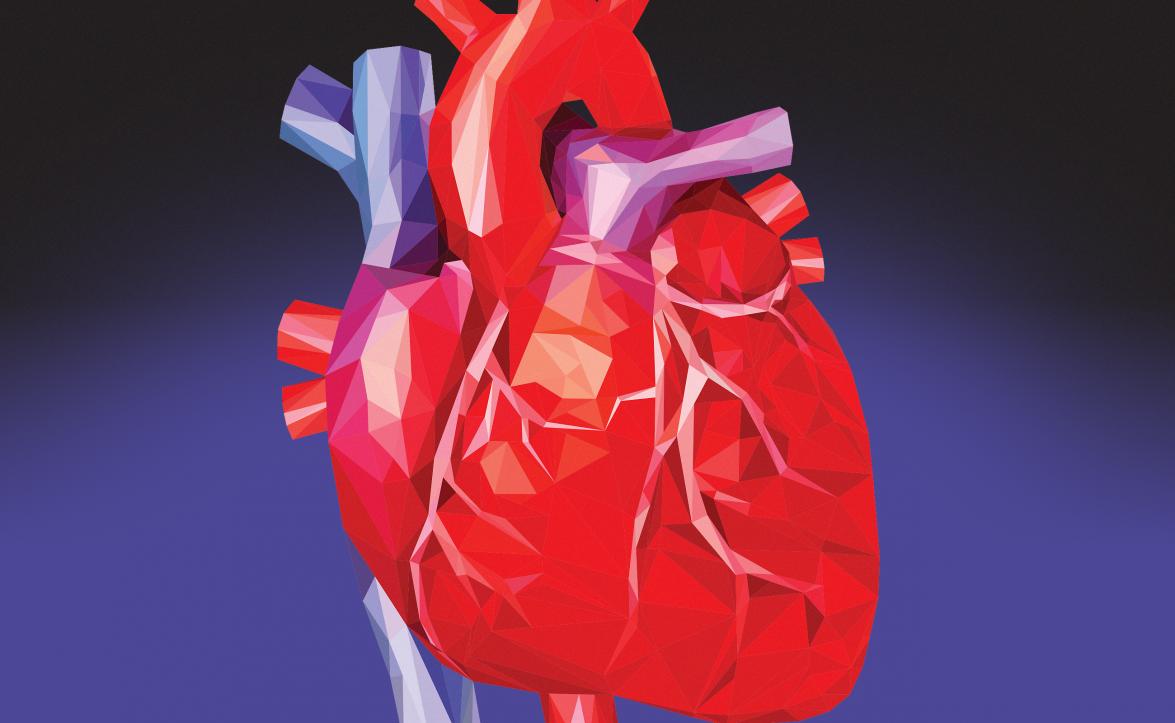
Vital Repair
Some significant public health threats require solutions at the molecular level.
Every day, in every cell in our bodies, tiny bits of genetic coding are damaged during routine processes like DNA replication or exposure to hazards such as UV rays or certain viruses. To function normally, cells must constantly recognize and repair these injuries.
When DNA repair mechanisms fail and broken molecules persist, the results can range from developmental defects to cancer.
Understanding DNA repair and the links between damage and disease will be the focus of the eighth biennial grassroots Baltimore Area Repair Symposium (BARS) on March 12. There, says BARS co-organizer Philip Jordan, PhD, an associate professor in Biochemistry and Molecular Biology, researchers will share new observations about DNA repair-deficiency disorders and novel molecular discoveries on the repair processes required to maintain our genetic code.
Jordan says advances in this field could lead to breakthroughs in diagnostics and customized treatments, both key to better patient care and outcomes.

Measuring a Parasite’s Reach
A mobile data collection platform helps reveal the prevalence of a neglected tropical disease.
In sub-Saharan Africa, an estimated 200 million people are infected with the parasitic worms that cause schistosomiasis. Released by freshwater snails, the worms penetrate the skin of people who bathe in water contaminated by human sewage. The disease can cause liver damage, kidney failure, bladder cancer and infertility if left untreated.
Working with the Performance Monitoring and Accountability 2020 project, Natalie Exum, PhD ’16, MS, an assistant scientist in Environmental Health and Engineering, is putting mobile technology in the hands of local data collectors to help determine the disease’s prevalence in Uganda.
The trained field data collectors conducted interviews with and collected urine samples from more than 10,000 Ugandans over two rounds of surveys. Uploading their data to mobile devices meant rapid turnaround on an important national survey.
“We’re far outside the capital, far outside any labs, and we’ve been able to get an understanding of the disease, which was not understood at a national scale before,” Exum says. “It’s a neglected tropical disease, and my hope is that this will bring focus onto it.”
These efforts align with the goals of World Water Day, observed every March 22 to bring attention to the importance of access to clean water.
Exum’s work has raised an alarm in Uganda, where policymakers agree that schistosomiasis is more widespread than previously thought. The first round of the survey found a prevalence of 22 percent in Uganda, with 31 percent of children under 5 having active infections, a clear indicator of the challenge ahead.
Exum notes that water and sanitation infrastructure are key to interrupting the transmission cycle of the disease. She hopes that this work will motivate policymakers to provide the sanitation facilities necessary to prevent contamination of water bodies.

A Cardio Conclave
Two scientific tracks converge to prevent heart disease and stroke and foster cardiovascular health.
If tickets were required, the discussion on new hypertension treatment guidelines at the 2018 American Heart Association’s EPI/Lifestyle Scientific Sessions would sell out faster than Springsteen on Broadway.
“It’s one of the more controversial hot topics right now,” says Epidemiology Professor Elizabeth Selvin, PhD ’04, MPH, of the new guidelines from cardiology groups that lower the threshold for a hypertension diagnosis. Selvin, a cardiovascular epidemiologist, is an organizer of the March 20–23 sessions in New Orleans, which will convene about 800 researchers, epidemiologists, physicians, nutritionists, exercise physiologists and other heart health professionals.
A vice chair on the EPI/Lifestyle meeting’s program committee, Selvin expects that a debate on doctors’ ethical responsibility to consider costs in medical decisions will also be a big draw—especially in the context of rising health care costs.
The annual meeting is unique in that it brings together two AHA member tracks—Epidemiology and Prevention with Lifestyle and Cardiometabolic Health.
“It’s a very synergistic relationship between the two of us, so there’s a nice balance,” Selvin says. “The researchers in these tracks have different but complementary interests and expertise, which generates productive scientific dialogue … and lively discussions and debates.”
Trending
The Word on Wolfe Street
Read
“Raw water” startups have begun to attract customers who are wary of treated tap water. The new fad is raising concerns among scientists worried about potential disease outbreaks. In a January 3 Time article, Kellogg Schwab points out that treatment of our drinking water is a “tremendous asset that we, as a country, take for granted.”
See
Finding a silver bullet to confirm the existence of a cancer cluster is “daunting” public health work, Tom Burke explains in a December 19, 2017, CBS This Morning report on a possible cancer cluster linked to a now-demolished Florida high school: “You have to be sure of the diagnosis of people, you have to be sure of the number of cases. You have to look at the time involved.”
Follow
Responding to two years of falling U.S. life expectancy—due in part to “diseases of despair” like addiction, suicide and overdose—David Bishai writes January 16 in The Conversation that the public health workforce must commit to Public Health 3.0. The community-focused federal strategy calls on health officials to convene businesses, schools, hospitals and other stakeholders to combat modern health threats.
Life expectancy is not supposed to fall in countries that are this rich, spend this much on health and pride themselves on taking care of each other.
Share This - My Creative Outlet

Aditi Sen
Health Policy and Management
Seeing theater. I love to immerse myself in the world created on stage and imagine how all the pieces—acting, lighting, sets, direction—came together to create that world.

Gigi Gronvall
Center for Health Security
Sports photography, thanks to my kids. I spend A LOT of time watching them play soccer, futsal, baseball. I love capturing the moment when they and the other kids make contact with the ball, and that look of super-focused determination.
Events Watch
The Stealth Epidemic
3 Questions for David Jernigan, PhD

Alcohol is responsible for a death every 10 seconds. How to reduce its multifarious harms? David Jernigan, director of the Center on Alcohol Marketing and Youth, and other experts will explore policy solutions April 11–13 at the 18th Alcohol Policy Conference in Washington, D.C., for which Jernigan serves on the planning committee.
What would surprise people about alcohol’s toll on health?
Alcohol is a causal agent in more than 200 health and injury conditions. You say alcohol and people think alcoholism and drinking and driving. They don’t necessarily think cancer, TB or pneumonia.
Policywise, what are the most effective strategies to combat alcohol problems?
Reducing affordability, reducing availability and restricting advertising. These are battles that we’re fighting in city after city across the country and can only be won [with] substantial political will.
What’s trending in the field of alcohol and health?
There’s increasing attention being paid to the link between alcohol and various cancers. Most people are unaware that alcohol causes 15 percent of U.S. breast cancer cases.